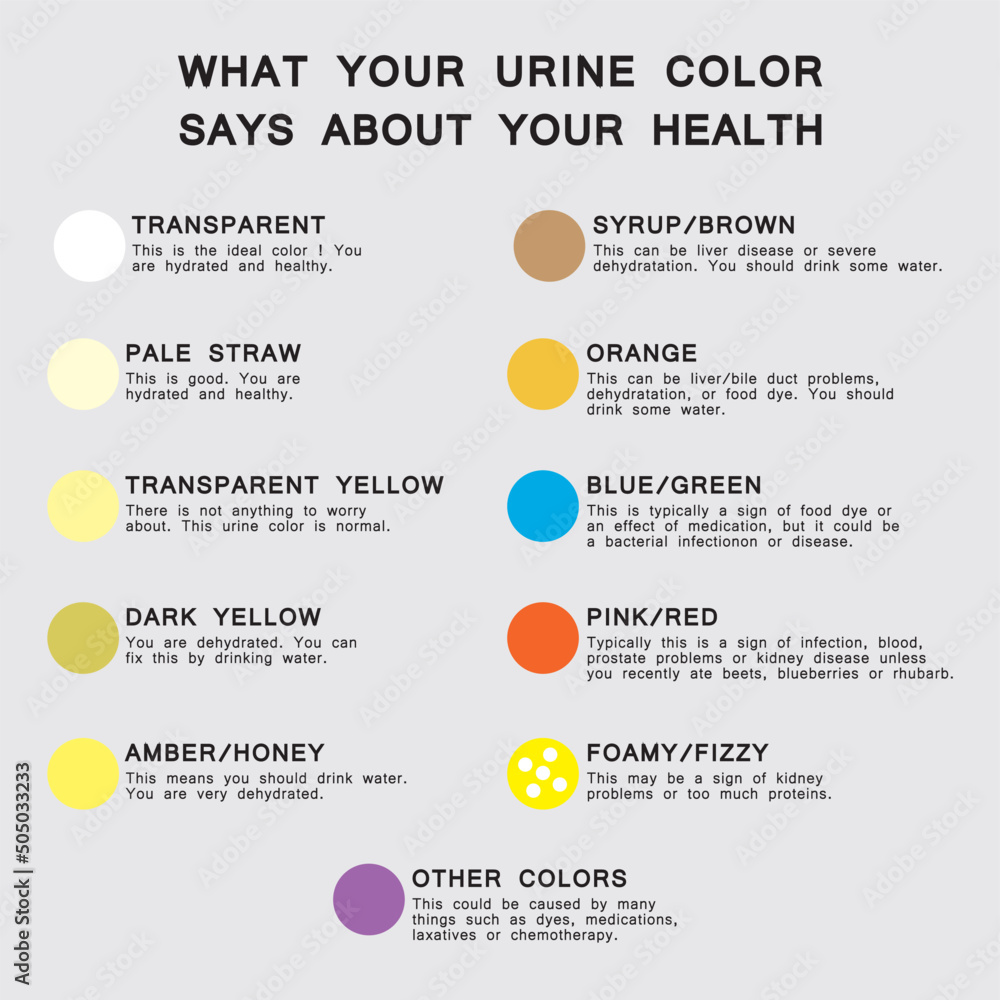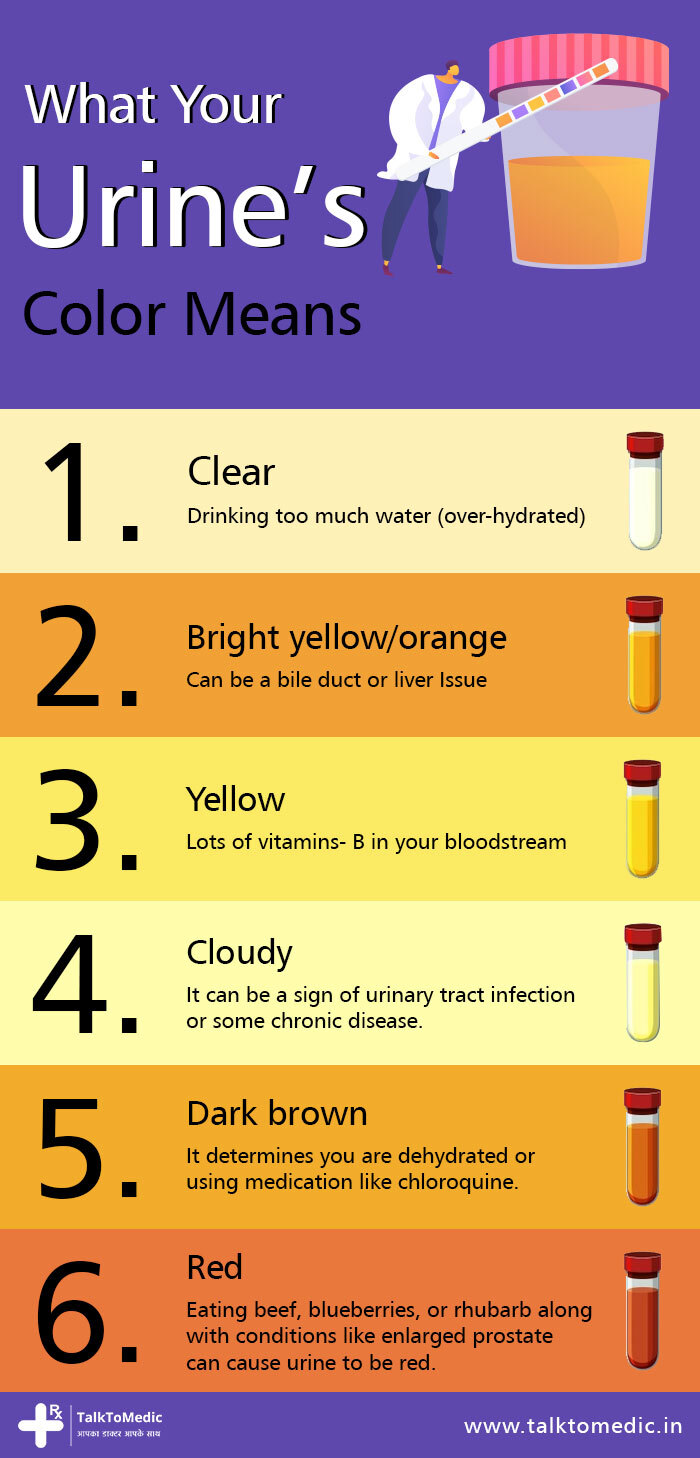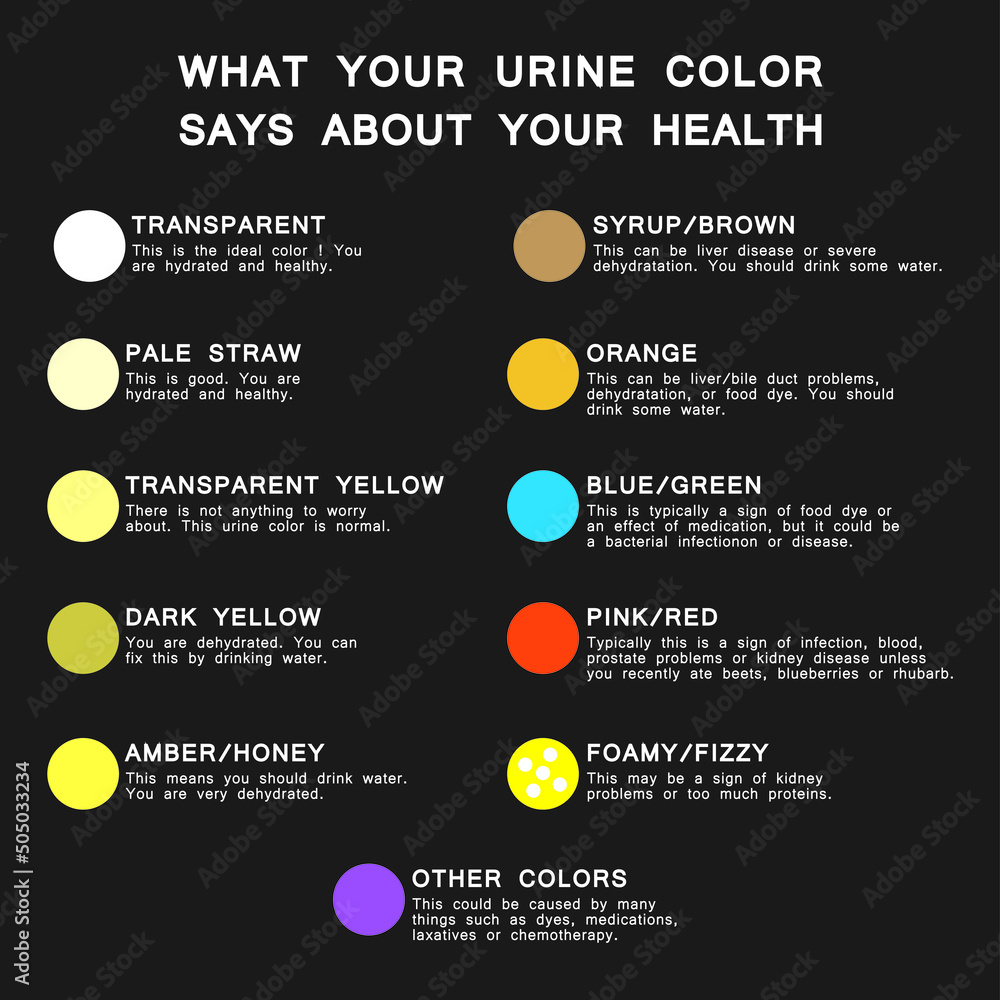Discover what the color of your urine says about your health. From clear to dark brown, learn how urine color can indicate dehydration, infections, and other underlying conditions.
Introduction
Today, we’re going to discuss the color of your urine and what that means for your health.
Urine is an important indicator of what’s happening inside your body. It’s actually filtered blood, and the tiny filters in your kidneys called nephrons work to recycle good materials back into the blood while removing toxins and waste through your urine.
Clear urine might seem like a good thing, but it actually means that you’re drinking too much water and diluting important electrolytes.
On the other hand, normal urine color should be amber, yellow, or straw-colored. If you notice red or pink urine, it could be a sign of blood and might indicate a kidney stone, an infection or even something more serious.
Additionally, orange urine or fluorescent yellow urine can be the result of synthetic vitamins or dyes, while blue urine can be caused by certain medications or artificial colors.
These are just a few examples of what your urine color can reveal about your health, so pay attention to this important bodily function.

This image is property of i.ytimg.com.
Clear Urine
If your urine is completely clear, it means that you are drinking too much water. Clear urine indicates that you are diluting your urine, which can lead to dehydration.
While drinking enough water is important for hydration, drinking excessive amounts of water can actually be detrimental to your health.
When you drink too much water, you dilute the sodium levels in your body, which can disrupt your electrolyte balance and lead to dehydration.
It’s important to listen to your body’s thirst signals and only drink water when you are genuinely thirsty, especially when you are not working out or sweating excessively.
Normal Urine Color
Normal urine color should be amber, yellow, or straw-colored. This color comes from a pigment in your blood.
When your urine is within this normal color range, it indicates that your body is functioning properly and processing waste effectively. As long as your urine remains in this range, there is generally no cause for concern.
Red or Pink Urine
If your urine appears red or pink, it usually signifies the presence of blood. Blood in the urine, also known as hematuria, can be caused by various factors, including kidney stones, urinary tract infections or more serious underlying conditions.
It’s important to seek medical help if you notice red or pink urine, as it could be a sign of an underlying health issue.
It’s worth noting that menstruation can also cause the urine to turn pink, so it’s important to differentiate between menstrual-related changes and other potential causes of blood in the urine.
Orange or Fluorescent Yellow Urine
If your urine appears orange or has a fluorescent yellow color, it is often the result of consuming synthetic vitamins, especially B vitamins.
These vitamins can give your urine a bright and vibrant color. Additionally, certain medications may contain dyes that can also cause your urine to appear orange or fluorescent yellow.
While it’s rare, it’s important to note that orange urine can also indicate underlying issues with the gallbladder or liver.
If you consistently notice an orange color in your urine, it is advisable to consult a healthcare professional for further evaluation.

This image is property of as1.ftcdn.net.
Blue or Green Urine
The color of your urine can also be affected by certain medications or artificial colors.
If you have recently taken medications that contain methylene blue or certain artificial colors, you may notice a blue or green tint to your urine. Additionally, consuming asparagus can also turn your urine green.
While this color change may be alarming, it is typically harmless and will resolve on its own.
However, if you have not recently consumed any of these substances and your urine continues to appear blue or green, it is recommended that you seek medical advice to rule out any underlying health concerns.
Dark Brown Urine
Dark brown urine usually indicates dehydration and a need for more fluids. When your urine is dark brown, it is a sign that your body is lacking proper hydration.
It’s important to increase your fluid intake to help restore hydration levels. However, if your urine is very dark brown, it could potentially signify a liver problem.
In this case, it is crucial to consult a healthcare professional for further evaluation and diagnosis.

This image is property of www.talktomedic.com.
Foamy Urine
Foamy urine can be a result of several factors. It may indicate that you are consuming too much protein in your diet.
When the body has an excess intake of protein, it can lead to excess protein in the urine, resulting in foamy urine. Additionally, foamy urine can also potentially be caused by chronic kidney disease.
This condition is characterized by impaired kidney function, which can result in the presence of protein in the urine.
Furthermore, foamy urine is often observed in individuals with diabetes. Diabetes can lead to kidney damage, causing proteins to leak into the urine.
If you notice foamy urine, it is advised to cut down on your protein intake and monitor whether the foaminess improves. However, it is crucial to consult a healthcare professional for a proper diagnosis and appropriate management.
Cloudy Urine
Cloudy urine typically signifies an infection, especially when accompanied by other symptoms such as frequent urination or discomfort.
Most urinary tract infections (UTIs) are caused by the bacteria E. coli. If you experience cloudy urine, it is important to seek medical attention to assess and treat the underlying infection.
In addition to infection, excessive sugar in the diet can feed bacteria, leading to cloudy urine. It is important to maintain a balanced and healthy diet to promote optimal urinary tract health.

This image is property of as1.ftcdn.net.
Urinary Tract Infection
Urinary tract infections (UTIs) can be caused by various factors, with E. coli bacteria being one of the most common culprits.
Symptoms of a UTI include frequent urination, pain or burning during urination, and cloudy urine. If left untreated, UTIs can lead to more serious complications.
In some cases, excessive thirst and urination can be signs of an underlying condition, such as diabetes or hypercalcemia. It is crucial to monitor these symptoms and seek medical advice for appropriate diagnosis and treatment.
Conclusion
Understanding the color of your urine can serve as a useful indicator of your overall health. Changes in urine color can signal potential health concerns and prompt you to seek medical advice if needed.
It is important to pay attention to any persistent or concerning changes in urine color and consult a healthcare professional for appropriate evaluation and guidance.

This image is property of www.drmangeshpatil.com.
